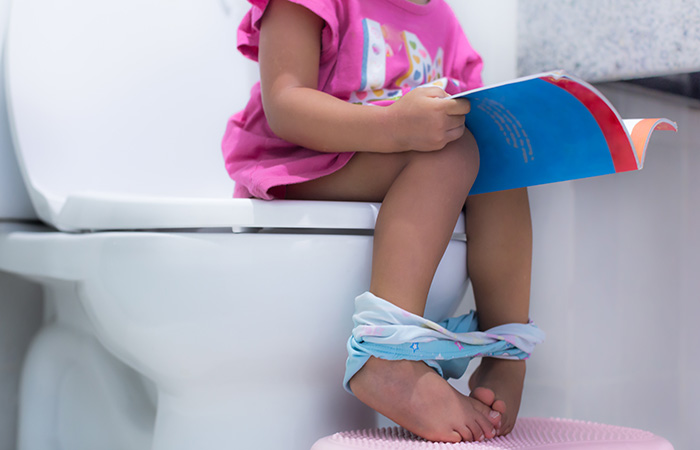Children's Emergency Department is now located in Children's Tower: 1001 E. Marshall Street.
Learn more
Mastering toilet training is an important leap toward independence. The process can be met with excitement, frustration, anxiety or a little bit of it all for both parent and child.
A question we often hear as medical professionals is: “My child is ‘X’ months/years old and is still in a diaper. Shouldn’t they be potty trained by now?” But when a child is ready for potty training has less to do with actual age and more to do with showing signs of readiness developmentally.
On average, most children are able to stay dry during the day by two to four years of age. Before starting to potty train, a child should be able to do the following:
They should also be showing an interest in learning.
One important aspect to consider before beginning potty training is whether your child struggles with constipation. If they do, it’s advised to make sure their constipation is under control prior to starting as painful bowel movements may lead to them holding in their stool or refusing to use the toilet. If this happens, the level of frustration and anxiety increases which creates negativity around the training process that can lead to setbacks.
Offering foods that are high in fiber and limiting dairy to the equivalent of two eight-ounce cups of milk per day (this is the recommended amount for this for a toddler-age child) helps keep stools soft.
We all hear stories of parents being able to fully potty train their child in a matter of days. However, on average potty training can take upward of six months. It may take more time for some children and less for others. Girls usually complete potty training earlier than boys.
To start, preferably at least one parent should have the time and energy, emotionally speaking, to devote to potty training daily. During this time, offer plenty of positive reinforcement and know that accidents will occur which leads to an increase in laundry.
Consider the following tips to help your child use the toilet:
Learn more about potty training tips from Parents.com
In general, it’s good to remind your child to slow down and take potty breaks.
Even after a child is fully potty trained, they may have occasional accidents. Things like changes in a child’s routine can lead to accidents. If your child has repeated accidents after they’ve been fully potty trained, contact your child’s primary care provider as there may be a medical issue such as a urinary tract infection.
The ability to stay dry at night may not happen at the same time as staying dry during the day. Nighttime wetting may continue for months or even years longer than daytime wetting. By five years of age, 20 percent of children are still wetting the bed. By six years of age, 10 percent are still wetting the bed. If your child is not dry at night by six years of age, talk to their primary care provider.
Just as with any other developmental milestone, if you have concerns about your child’s potty-training progress, it’s always advised to speak to your child’s primary care provider. If needed, there are specialists like our urology team here to help.
By Leigh Hamm, pediatric nurse practitioner, urology